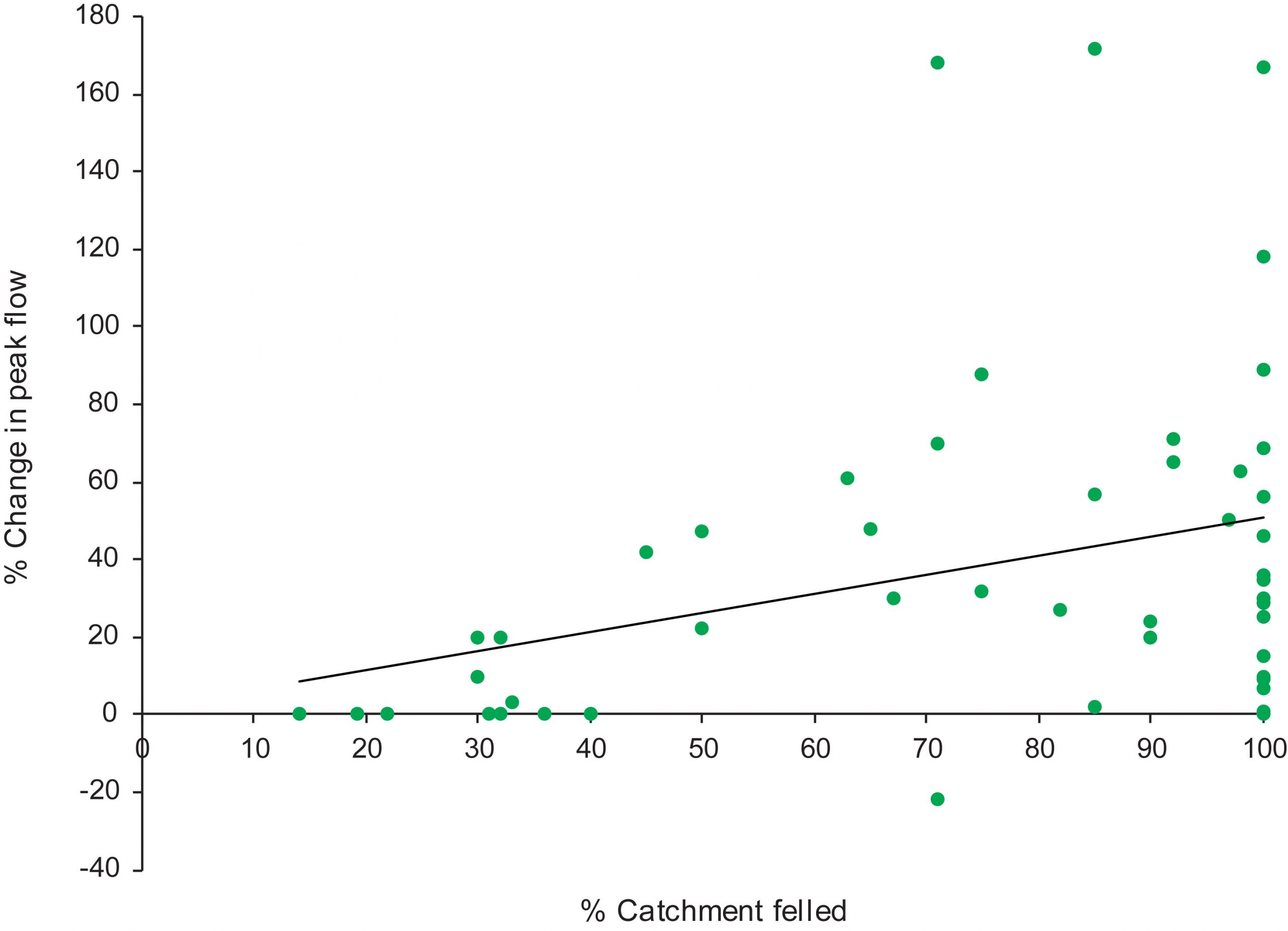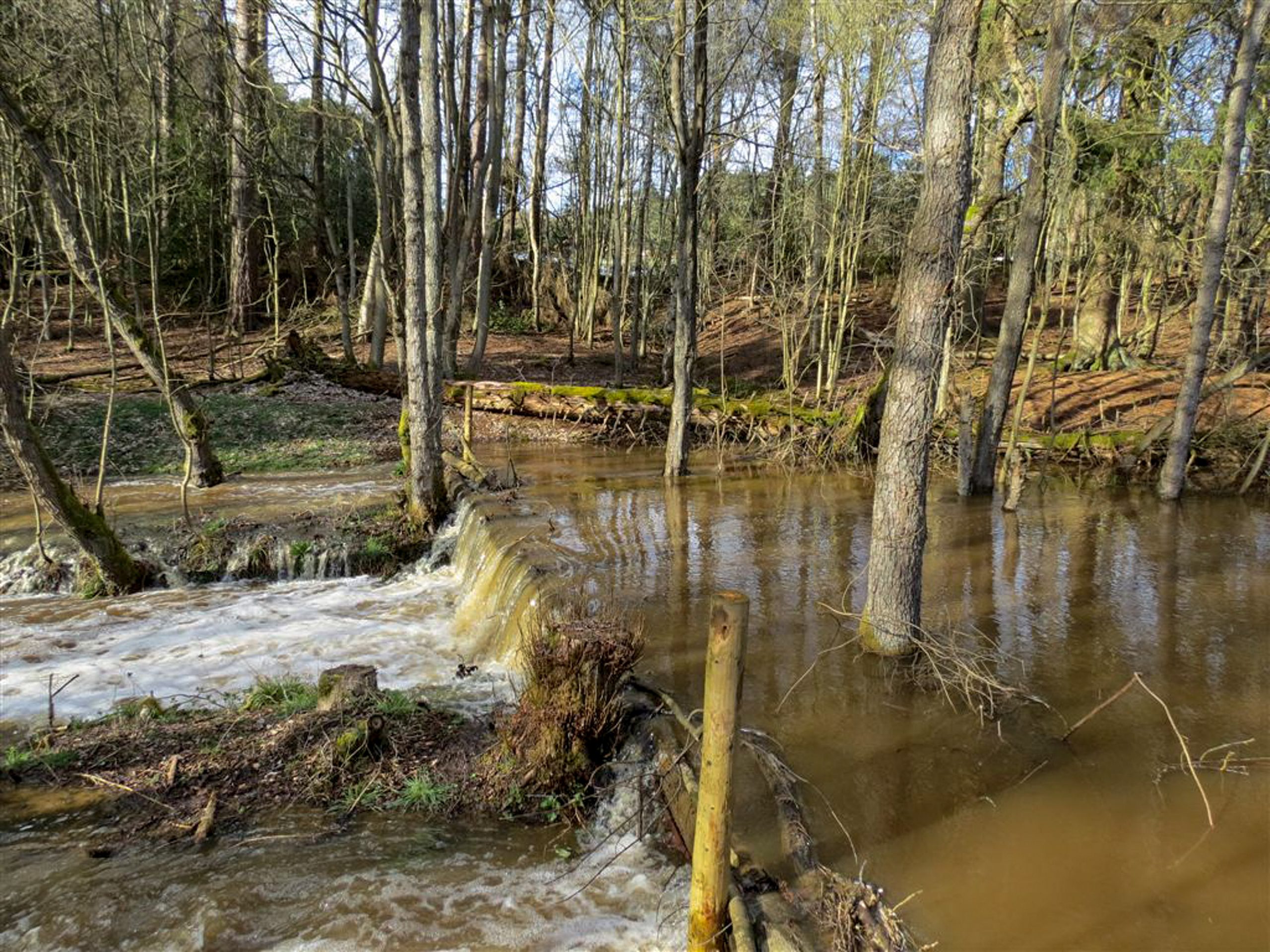How can forestry help reduce flooding?
Many parts of the UK are periodically affected by flooding and the frequency of floods is expected to increase due to climate change. Tree planting and forest management can alter flood flows, although the extent of this depends on many factors. Here we describe the latest understanding of how forestry can help.

Plot showing the positive relationship between the percentage of a forested catchment felled and peak flows, implying that forest planting will have the opposite effect; this is supported by long-term afforestation studies. Each data point is the measured effect recorded by an individual paired-catchment study. The definition of peak flow varies between studies but are mainly small floods with a recurrence interval of between one and ten years (the highest peak had a recurrence interval of 100 years). Redrawn from Guillemette et al. (2005): Rainfall generated stormflow response to clearcutting a boreal forest: peak flow comparison with 50 world-wide basin studies. Journal of Hydrology 302 (1–4), 137–153.
About the series
Aimed at practitioners, the factsheets showcase the breadth of research carried out by Forest Research, sometimes over decades, into how trees and forests are facing the challenges of climate change, and actionable insights into how trees and woodlands can help mitigate the effects of climate change.

